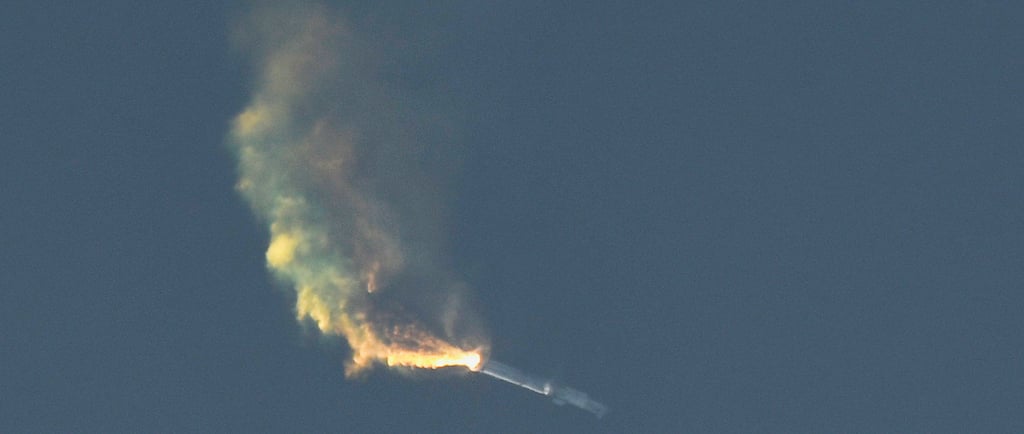Elon Musk’s SpaceX Starship Explodes Mid-Flight During Test in Texas
SpaceX’s Starship, Elon Musk’s massive next-gen rocket, exploded mid-air during a crucial test flight in Texas, marking another dramatic chapter in the company’s journey toward Mars. Here’s what happened, why it matters, and what’s next.
WORLDWIDE
6/19/20252 min read


Boca Chica, Texas – June 17, 2025. A deafening boom echoed across South Texas skies as SpaceX’s Starship—the world’s largest and most powerful rocket—exploded mid-air during a test flight, sending shockwaves through the global space community.
The massive 400-foot tall rocket lifted off from SpaceX’s Starbase facility at around 8:42 a.m. local time, roaring into the clear morning sky. For the first few minutes, everything seemed textbook. The two-stage behemoth, designed to carry humans to the Moon, Mars, and beyond, passed max-Q—the point of maximum aerodynamic stress. Then, something went wrong.
Roughly eight minutes into flight, onboard cameras caught signs of failure as the second stage attempted a crucial orbital burn. Instead of coasting to its planned orbit, Starship veered off course and broke apart, culminating in a fiery explosion that was visible from miles away.
SpaceX quickly confirmed the event in a post on X (formerly Twitter):
“Starship experienced a rapid unscheduled disassembly during second stage burn. Teams are analyzing data and will provide updates soon.”
It wasn’t the first time. Previous test flights have ended in similar “rapid disassemblies,” a term Musk and his engineers use to describe controlled—but fiery—failures. But unlike previous versions, this launch carried updated heat shields, engine upgrades, and refined flight software. That made this test especially important in SpaceX’s long-term plan.
Elon Musk responded a few hours later with his signature optimism:
“Great progress today. We’ll learn a ton from this and fly again soon. Getting closer every time.”
Still, the explosion reignites questions about the risks SpaceX is taking with its break-fast, fix-fast development model. While traditional aerospace giants like NASA and Boeing lean on slower, more conservative protocols, Musk’s team believes rapid iteration is the key to unlocking deep-space exploration.
The Federal Aviation Administration (FAA) confirmed that it will oversee an investigation, as is standard for all major launch failures. No injuries were reported, and debris landed safely within the designated exclusion zone in the Gulf of Mexico.
Why This Matters
Starship is not just any rocket. It’s central to NASA’s Artemis program, set to return astronauts to the Moon later this decade. It’s also the linchpin of Musk’s broader vision: building a self-sustaining human colony on Mars. Any failure delays those timelines—but also teaches valuable lessons.
This specific flight aimed to test orbital reentry systems and demonstrate a full-duration second-stage burn. Despite the explosion, the rocket did successfully separate its stages—something SpaceX failed to achieve in earlier tests. That’s a milestone, even in failure.
What’s Next?
SpaceX engineers are already reviewing telemetry data to understand the cause. Based on previous patterns, we can expect another test flight within weeks—not months. Musk has made it clear: Starship will only succeed by flying, failing, learning, and flying again.
And as history shows, that approach may look chaotic—but it works. After all, Falcon 9 once exploded too. Now it’s the most reliable rocket in operation.
So while today's Starship ended in fire and smoke, it’s not the end of the road. It’s just another hard-earned step toward the stars.
